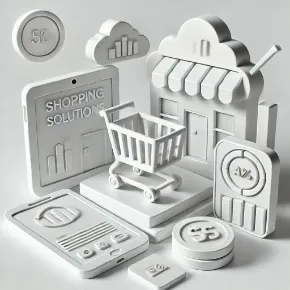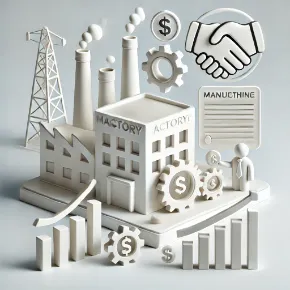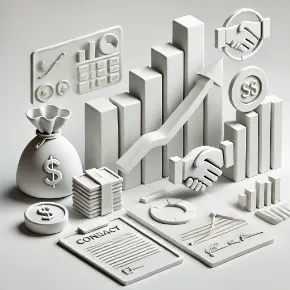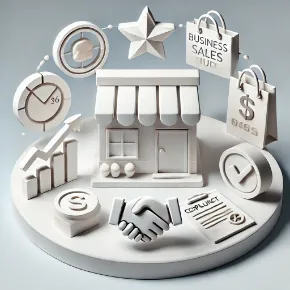The global market is increasingly demanding sustainable practices, and businesses that embrace eco-friendly manufacturing processes are positioning themselves for long-term success. For those seeking to expand operations and gain a competitive edge, integrating sustainability into manufacturing is no longer optional—it is a strategic advantage.
The Growing Importance of Green Manufacturing
With climate change and environmental responsibility now top priorities for consumers, investors, and governments, companies are under increasing pressure to adopt green practices. Green manufacturing involves reducing environmental impact through efficient resource use, waste reduction, and minimizing carbon emissions during production processes. Beyond the environmental benefits, it provides businesses with an opportunity to differentiate themselves in the marketplace, build stronger brand loyalty, and attract investors focused on sustainability.
Key Advantages of Green Manufacturing for Global Trade
Attracting Eco-Conscious Consumers: Today’s consumers are more informed and concerned about the environmental impact of the products they purchase. Brands that demonstrate a commitment to sustainability are winning consumer trust and loyalty. The growing demand for eco-friendly products presents an opportunity for manufacturers to tap into a new market segment.
Cost Savings and Efficiency: Contrary to the misconception that going green is expensive, many sustainable practices actually help reduce costs. By optimizing energy usage, reducing waste, and reusing materials, companies can lower production costs. For example, energy-efficient machinery, waste recycling, and water-saving systems can significantly reduce overhead costs in the long run.
Meeting Regulatory Compliance: Many countries are tightening regulations around environmental impacts, especially in manufacturing. Countries like the European Union are introducing strict rules on carbon emissions, waste management, and recycling. Companies that are ahead of the curve in adopting green manufacturing practices are better positioned to comply with these evolving regulations and avoid penalties.
Dr. Pooyan Ghamari’s Insight on Sustainable Manufacturing
Dr. Pooyan Ghamari, a Swiss economist and founder of ALand, sees green manufacturing as a powerful tool for future-proofing businesses. According to him, “The market for sustainable products is expanding, and companies that align their manufacturing processes with environmental goals are not only addressing market demands but are also ensuring long-term profitability. The transition to green manufacturing is an investment in both the planet and the company’s future growth.”
Strategic Considerations for Implementing Green Manufacturing
Sourcing Sustainable Materials: A key component of green manufacturing is the materials used in the production process. Businesses should seek out suppliers who offer sustainable raw materials and prioritize recyclable or biodegradable options. Additionally, companies should assess the environmental impact of their entire supply chain and look for opportunities to make it more sustainable.
Investing in Technology: The latest advancements in manufacturing technology make it easier than ever to adopt sustainable practices. From energy-efficient equipment to automated systems that reduce waste, businesses should invest in technologies that align with their sustainability goals. Leveraging cutting-edge technology not only improves efficiency but also helps companies stay competitive.
Embracing Circular Economy Models: Circular economy models, where products are reused, refurbished, or recycled instead of being disposed of, are an integral part of green manufacturing. This reduces waste, minimizes the need for raw materials, and extends the lifespan of products. Companies implementing circular economy principles are ahead of the curve and can create significant competitive advantages.
Actionable Tips for Manufacturers Seeking to Go Green
Audit Your Operations: Start by conducting a sustainability audit of your manufacturing processes. Identify areas where energy, water, and materials can be used more efficiently and where waste reduction practices can be implemented.
Green Certifications: Consider obtaining green certifications such as ISO 14001 (Environmental Management) or LEED (Leadership in Energy and Environmental Design). These certifications demonstrate your commitment to sustainability and can enhance your company’s reputation globally.
Collaborate with Green Partners: In a global trade environment, partnerships are essential. Collaborate with suppliers, manufacturers, and distributors who prioritize sustainability. By working together, you can enhance your green supply chain and build a more resilient business.
Educate and Engage Your Workforce: For green manufacturing to succeed, it’s essential that your workforce understands the importance of sustainable practices. Provide training and resources to help employees adopt eco-friendly behaviors both on the factory floor and in their day-to-day operations.
10 Thought-Provoking FAQs
What are the key benefits of green manufacturing for businesses? Green manufacturing offers reduced production costs, increased consumer loyalty, compliance with environmental regulations, and enhanced brand reputation.
How can a business get started with implementing green manufacturing? Begin with an energy and waste audit of your current operations, invest in energy-efficient technologies, and source materials from sustainable suppliers.
What are the financial incentives for adopting green manufacturing practices? Many governments offer tax credits, subsidies, and grants for companies that adopt eco-friendly practices. Additionally, sustainability can lead to long-term cost savings by reducing energy consumption and waste.
Which countries have strong green manufacturing regulations? Countries in the European Union, like Germany and Sweden, have strict environmental regulations. The United States and China are also making strides in promoting sustainable manufacturing.
How does green manufacturing impact global supply chains? Green manufacturing can improve the resilience and efficiency of supply chains by reducing waste, improving logistics, and meeting regulatory requirements in global markets.
Can small businesses afford to implement green manufacturing practices? Yes. Many green technologies, such as energy-efficient lighting and machinery, are affordable and can be implemented incrementally without significant upfront costs.
How can green certifications enhance a brand’s reputation? Certifications like ISO 14001 or LEED signal to consumers and business partners that your company is committed to environmental stewardship, which can attract eco-conscious customers.
What are the challenges of adopting green manufacturing? Challenges include the initial cost of implementing new technologies, sourcing sustainable materials, and navigating complex regulations.
How can businesses communicate their sustainability efforts to customers? Use transparent marketing, sustainability reports, and certifications to show consumers your commitment to the environment. Engage customers through social media and educational content.
What role does technology play in green manufacturing? Technology enables businesses to monitor and reduce energy consumption, minimize waste, and enhance product design for sustainability.
Explore Further
To gain deeper insights into global trade, green manufacturing trends, and other aspects of business growth, explore more articles at Shop.ALand Blog and keep up-to-date with industry shifts in Shop.ALand News. For investment opportunities in sustainable real estate, visit A.Land and discover secure investment methods through EE.Gold.






































